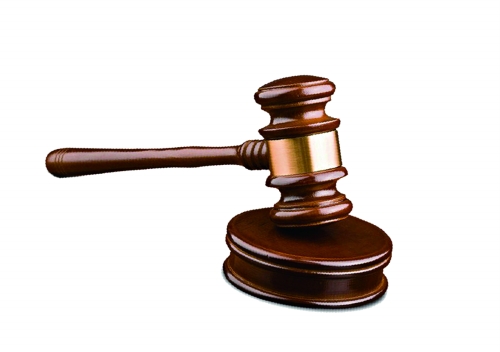Acquit Coffee! Healthier than Coke

At the end of the 19th century, coffee sales in the United States increased dramatically. John Pemberton, a pharmacist in Atlanta, Georgia, made an innovation. He made a cold drink with caffeine as the basic ingredient to relieve fatigue, thus creating a coffee competitor, Coca Cola, a caffeinated drink made from syrup squeezed from two Latin American plants. Pemberton made Coca-Cola's recipe out of a three-legged brass jar in his backyard. The name comes from Pemberton accountant Frank Robinson, who loved calligraphy and wrote Coca Cola in a special way, as if it were a flowing letter, which later became a world-famous trademark. The soft drink was first sold at Jacob's Pharmacy in Atlanta on May 8, 1886. Selling about nine cans a day, the first year sold $50, less than his $70 investment. Coca-Cola's first year of sales didn't produce the amazing profits it does now. Later, other smart Americans invented hamburgers instead of steaks and various soft drinks instead of natural juices.
Before 1903, the soft drink was marketed as a tonic, and its ingredients included cocaine and caffeine-rich cola tree nut extract. Later, the FDA banned the sale of cocaine-containing beverages and limited caffeine content to 2 percent. Now, this tiresome synthetic carbonated drink is popular, and its regular formula includes sugar and caffeine, while Diet Coke's formula contains no sugar. A large 600 ml to 2 liter bottle contains 120-400 mg of caffeine, equivalent to 1-3 cups of coffee. The synthetic caffeinated carbonated drink is popular with children, teenagers and adults around the world. While there have been no reports of adverse health effects, the artificial foods and drinks appear to be inextricably linked to obesity, a major problem for young Americans. Recent data suggest that caffeine intake from carbonated beverages may be linked to high blood pressure, benzene poisoning and cancer in young people. By the late 1890s, Coca-Cola had become one of the most popular carbonated drinks in the United States, with sales increasing 40-fold between 1890 and 1900. Attractive advertising was one of the key factors in its success, and after 100 years of operation, it sold throughout the United States and Canada. In the early 1900s, the company began selling syrup to independent bottlers who licensed it to sell beverages. Now, the huge American soft drink industry is run on this principle. Although Pemberton's original idea was to invent a health drink, a drink that would nourish the body and brain, it was only an idea and was not tested medically.
Pepsi is a drink invented by another pharmacist who developed it with a doctor's perspective on the health implications of the formula. Perhaps doctors were skeptical of pharmacists 'new ideas, forcing innovators like Pemberton and later Caleb Bradham to develop independently rather than collaborate with doctors. Bradham was a pharmacist in New Bern, South Carolina, who invented Pepsi in the 1890s. In 1898 Bradham purchased the name "Pep Kola" from a competitor and later registered the Pepsi trademark in June 1903, renaming Brad's drink Pepsi. That same year, Detroit became the world's "Motor City." Pepsi is made up of carbonated water, sugar, vanilla, oil (rare oil) and cola nuts. Pepsi was originally intended to treat stomachaches, and many believe Bradham's Pepsi name comes from the word dyspepsia, or pepsin, an ingredient used to treat stomach upsets, but it has never been used in beverages before. Bradham's original idea was to create a healthy soft drink, but the efficacy of this new product has not been tested and confirmed by doctors. In 1903 Bradham moved bottled Pepsi from the pharmacy to a rented warehouse. In 1909, Barney, an advocate of motor racing, published in the newspaper "a unique drink to eliminate fatigue and strengthen strength before drinking."
Important Notice :
前街咖啡 FrontStreet Coffee has moved to new addredd:
FrontStreet Coffee Address: 315,Donghua East Road,GuangZhou
Tel:020 38364473
- Prev

How much do you know about coffee's innocence? Not only contains caffeine
In the past, people didn't pay much attention to the complex chemicals in coffee when they enjoyed it. People are mainly interested in the refreshing effect of coffee, rather than the health effects of drinking coffee regularly.
- Next

Coffee is a kind of fruit!
Although there are a large number of cartoons and almost universally accepted legends that Eve ate a fruit from the Garden of Eden, the Bible does not say that Eve ate an apple.
Related
- Beginners will see the "Coffee pull flower" guide!
- What is the difference between ice blog purified milk and ordinary milk coffee?
- Why is the Philippines the largest producer of crops in Liberia?
- For coffee extraction, should the fine powder be retained?
- How does extracted espresso fill pressed powder? How much strength does it take to press the powder?
- How to make jasmine cold extract coffee? Is the jasmine + latte good?
- Will this little toy really make the coffee taste better? How does Lily Drip affect coffee extraction?
- Will the action of slapping the filter cup also affect coffee extraction?
- What's the difference between powder-to-water ratio and powder-to-liquid ratio?
- What is the Ethiopian local species? What does it have to do with Heirloom native species?

